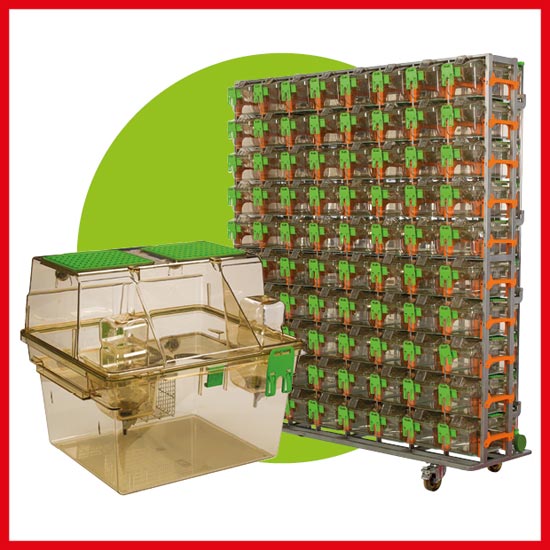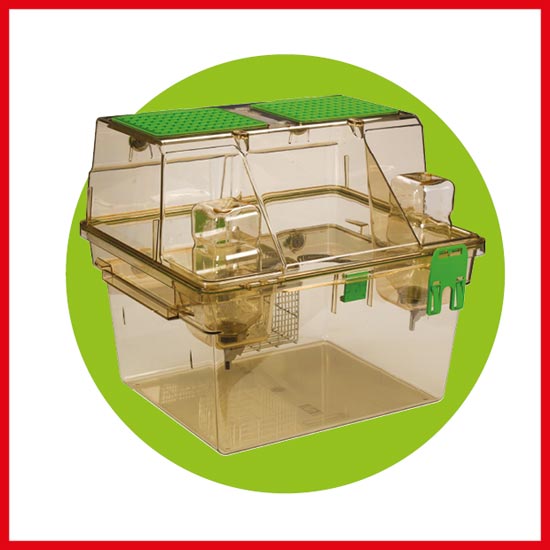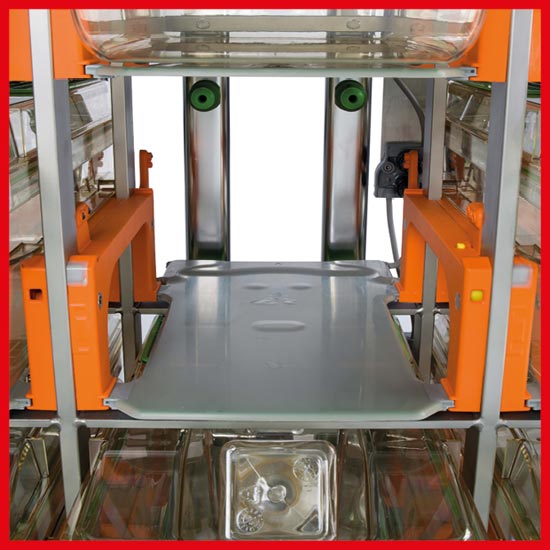
The current version of the Tecniplast website doesn't match your region. Please visit your local website to find information and offerings specific to your country.

The current version of the Tecniplast website doesn't match your region. Please visit your local website to find information and offerings specific to your country.


The UK NC3Rs nominated 2017 as the Year of Laboratory Rodent Welfare, and has focused on refining laboratory rodent welfare and research outcomes. Rodents comprise 75% of all animals used in animal studies in the EU (1). The NC3Rs initiative aimed to identify and support recent advances in animal welfare science and technology, and the adoption of best practice in the care and use of laboratory rodents (https://www.nc3rs.org.uk/rodent-welfare-hub).
Tecniplast has always been responsive to the need to incorporate technical innovation and animal welfare into housing systems for laboratory animals. It is interesting to note that two systems, Double Decker Rat cages (D-D) & Digitally Ventilated Cages (DVC®) , that were independently developed by TP, have met some important objectives included in the UK NC3Rs initiative.
In 2016, an NC3Rs prize sponsored by GlaxoSmithKline (GSK). was awarded to a study by Drs Joanna Makowska and Daniel Weary (2) from the University of British Columbia, Canada. The study addressed whether standard laboratory caging allowed for rat natural behaviours (such as burrowing and standing upright) and how important these were to rat welfare. The study showed that rats housed in standard height laboratory caging (18 to 20 cm high for rats) are unable to burrow or stand upright.
Also, that rats stand upright at 22 cm at 10 weeks of age and at 26 to 30 cm when fully grown. Rats in standard cages showed almost nine times more lateral stretching than rats in large cages. Makowska and Weary suggest that lateral stretching is used to alleviate the stiffness caused by the inability of the rats to stretch upright and the generally low levels of mobility in standard cages.
 The Tecniplast Double Decker rat cage is the only laboratory rat cage to feature a two-tier, enriched environment and an internal height of 38 cm. This three-dimensional space in D-D cages allows the animals to exhibit more positive behaviours, such as climbing, jumping and standing in bi-pedal posture as recommended by Makowska & Weary.
The Tecniplast Double Decker rat cage is the only laboratory rat cage to feature a two-tier, enriched environment and an internal height of 38 cm. This three-dimensional space in D-D cages allows the animals to exhibit more positive behaviours, such as climbing, jumping and standing in bi-pedal posture as recommended by Makowska & Weary.
The D-D rat cage not only benefits animal welfare but can also support refinement of scientific studies. Rats being studied via telemetry are usually housed in single-storey individually ventilated cages (IVCs) to ensure communication with the telemetry receiver placed under each cage. A study was conducted (3) to establish if recording from telemetered rats socially-housed in D-D cages, that would allow them to engage in upright posture, climbing and stretching, was technically possible. Multiplexing 4 receivers per D-D cage allowed drug-induced cardiovascular changes to be detected in D-D cages and with no significant differences versus results obtained in standard caging.
Automated, continuous home cage monitoring of cage conditions, animal behaviours and physiological status has long been a major unmet need for science, animal welfare and facility operations. An earlier NC3Rs sponsored “CRACK-IT” challenge led to a successful outcome from a collaboration between science and industry (4) in developing an automated home cage non-surgical monitoring system, which could be used with rodents, to measure activity and temperature over a minimum of a 24 hour period.
 Similarly, the recently launched Tecniplast Digitally Ventilated Cage (DVC®) system for mice was specifically developed to address some key needs in facility operations, animal welfare and research using continuous automated home cage monitoring. The DVC® is a facility directed capacitive-based system that can continuously monitor and create alerts for critical animal care conditions (food & water supply, water leaks and optimal cage change indicators) in IVC cages held in a modified standard IVC rack. Algorithms are available to monitor specific in-cage behaviours. A further benefit of the DVC® system is the ability to upscale the size of research projects, offering continuous automated animal activity data collection for better understanding of experiment outcomes, while using standard IVC cages and a modified rack.
Similarly, the recently launched Tecniplast Digitally Ventilated Cage (DVC®) system for mice was specifically developed to address some key needs in facility operations, animal welfare and research using continuous automated home cage monitoring. The DVC® is a facility directed capacitive-based system that can continuously monitor and create alerts for critical animal care conditions (food & water supply, water leaks and optimal cage change indicators) in IVC cages held in a modified standard IVC rack. Algorithms are available to monitor specific in-cage behaviours. A further benefit of the DVC® system is the ability to upscale the size of research projects, offering continuous automated animal activity data collection for better understanding of experiment outcomes, while using standard IVC cages and a modified rack.
These kind of collaborations show that a problem shared is frequently a problem solved!
Acknowledged Sources:
1) Seventh report from the European Commission.
2) Makowska IJ, Weary DM (2016). The importance of burrowing, climbing and standing upright for laboratory rats. Royal Society Open Science 3: 160136 doi: 10.1098/rsos.160136 https://www.nc3rs.org.uk/3rsprizewinners
3) https://www.nc3rs.org.uk/double-decker-rodent-telemetry
4) https://crackit.org.uk/challenge-3-rodent-big-brother
James Wallace
Panorama editor